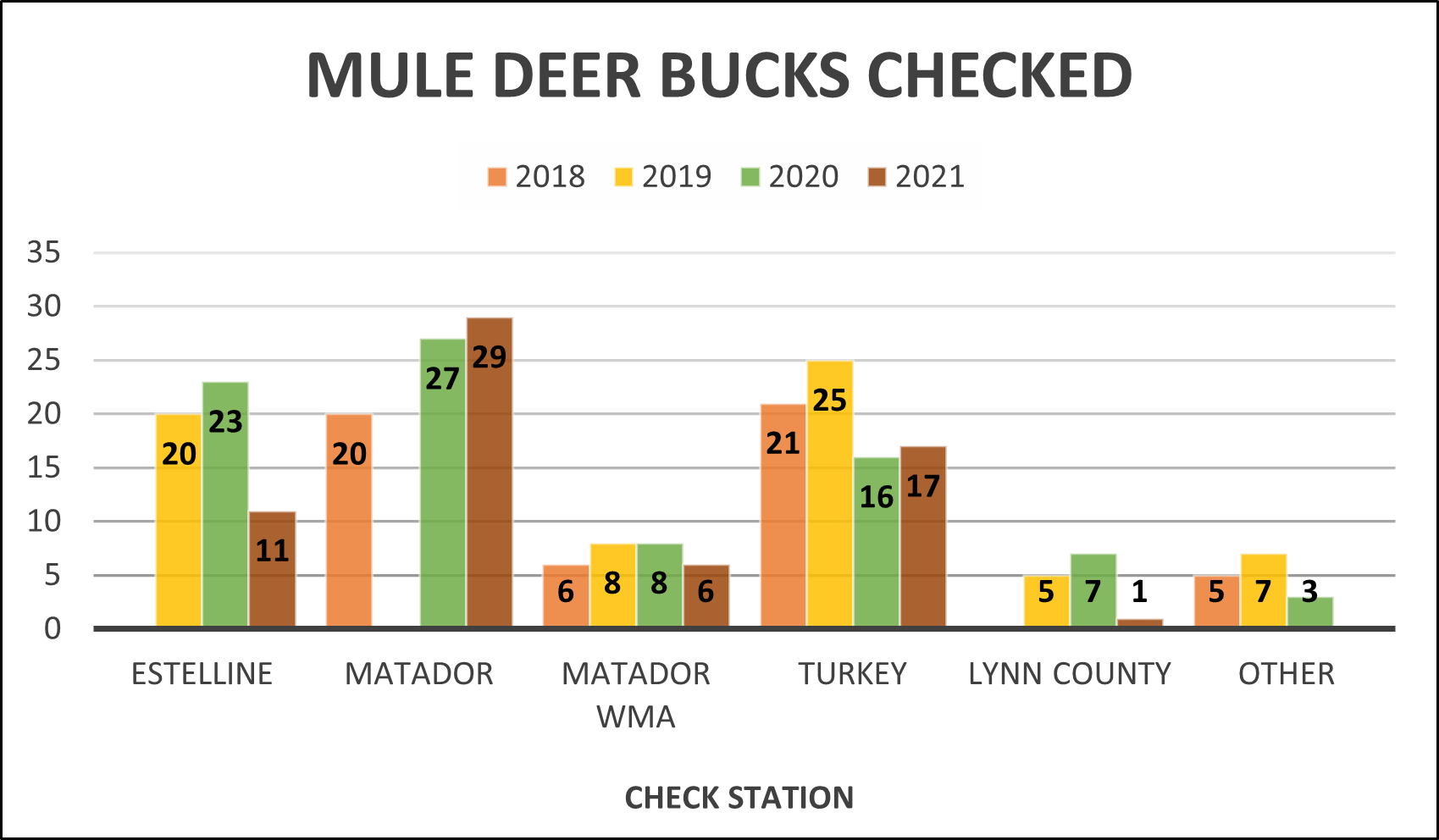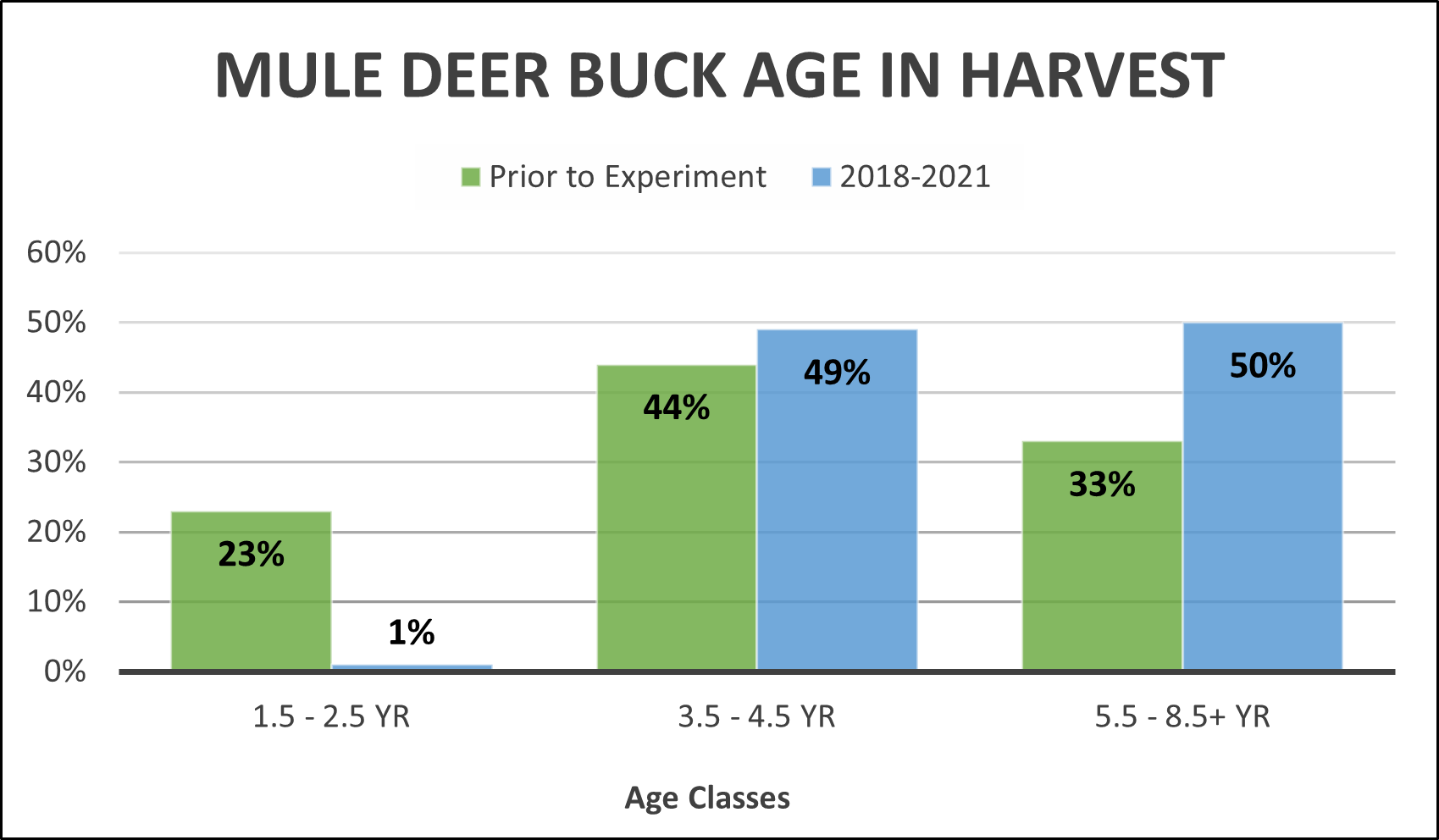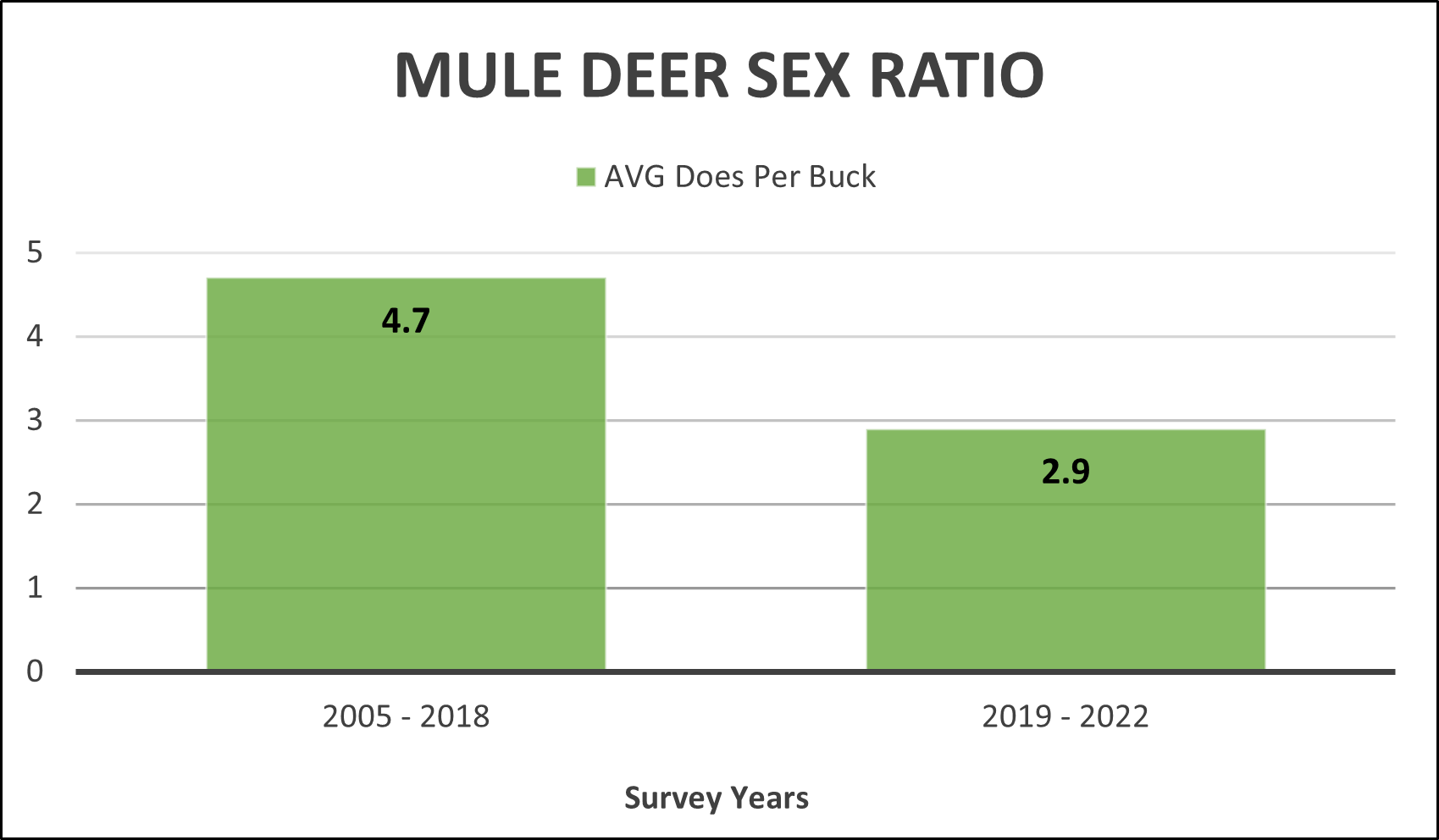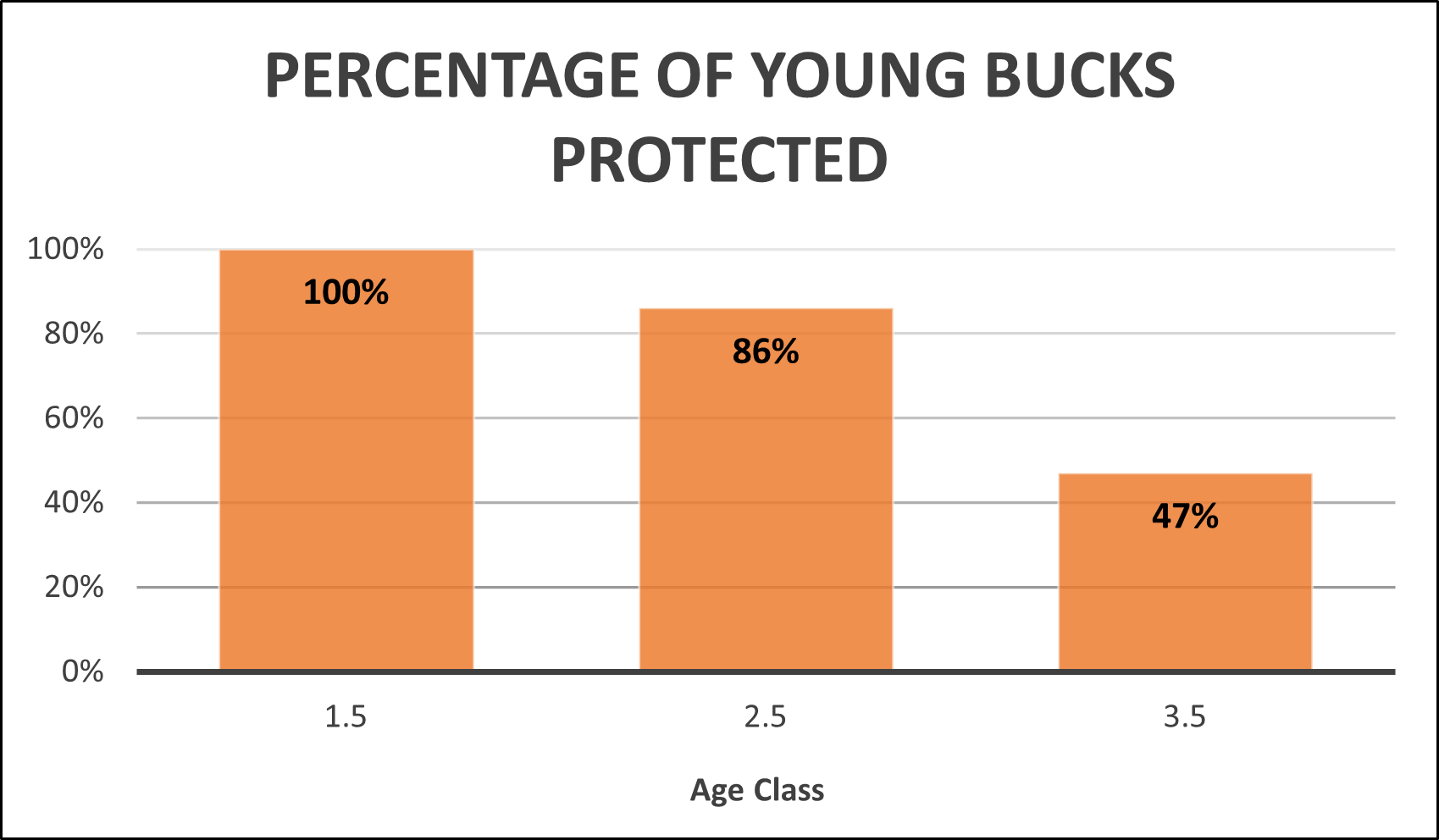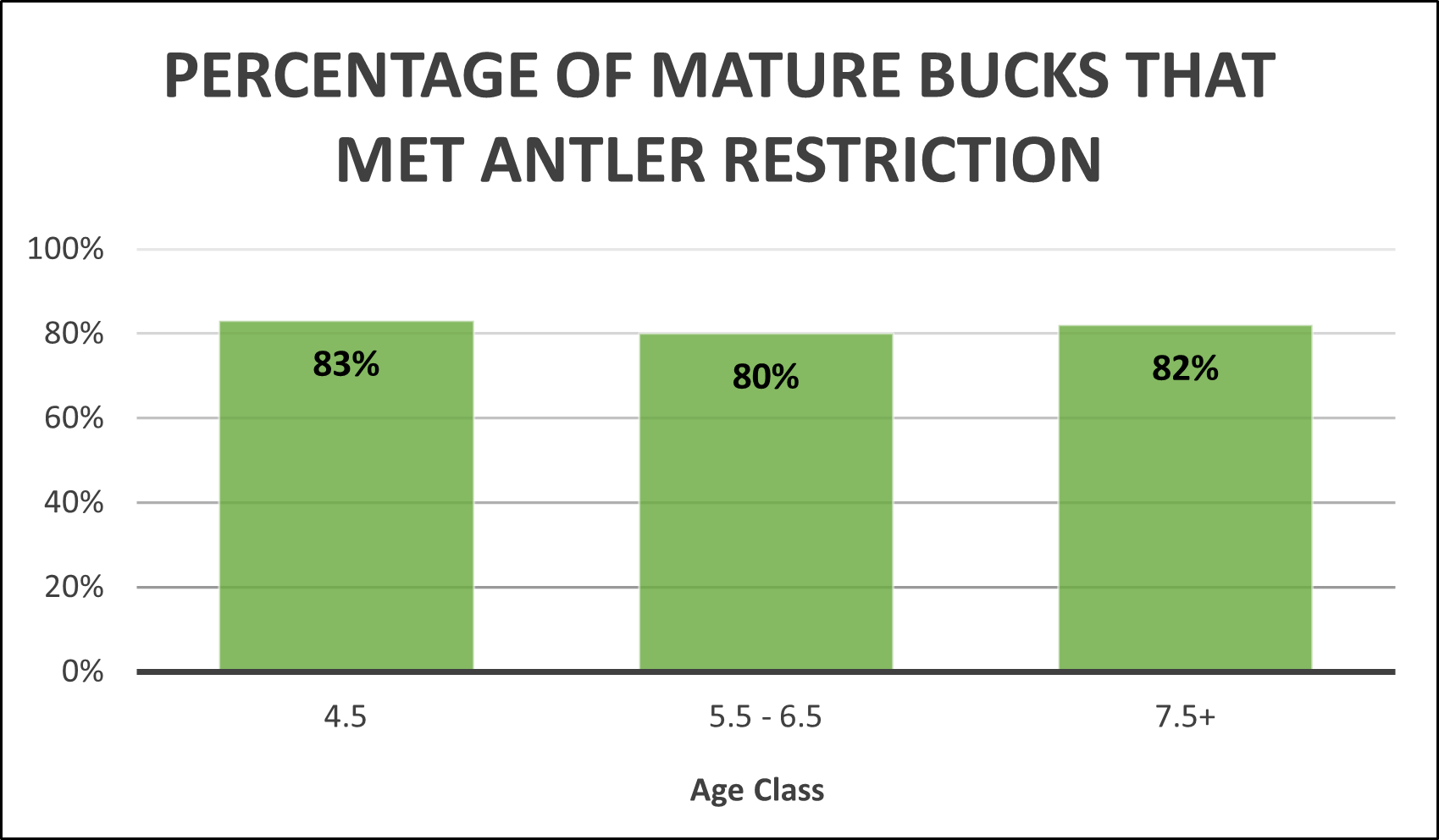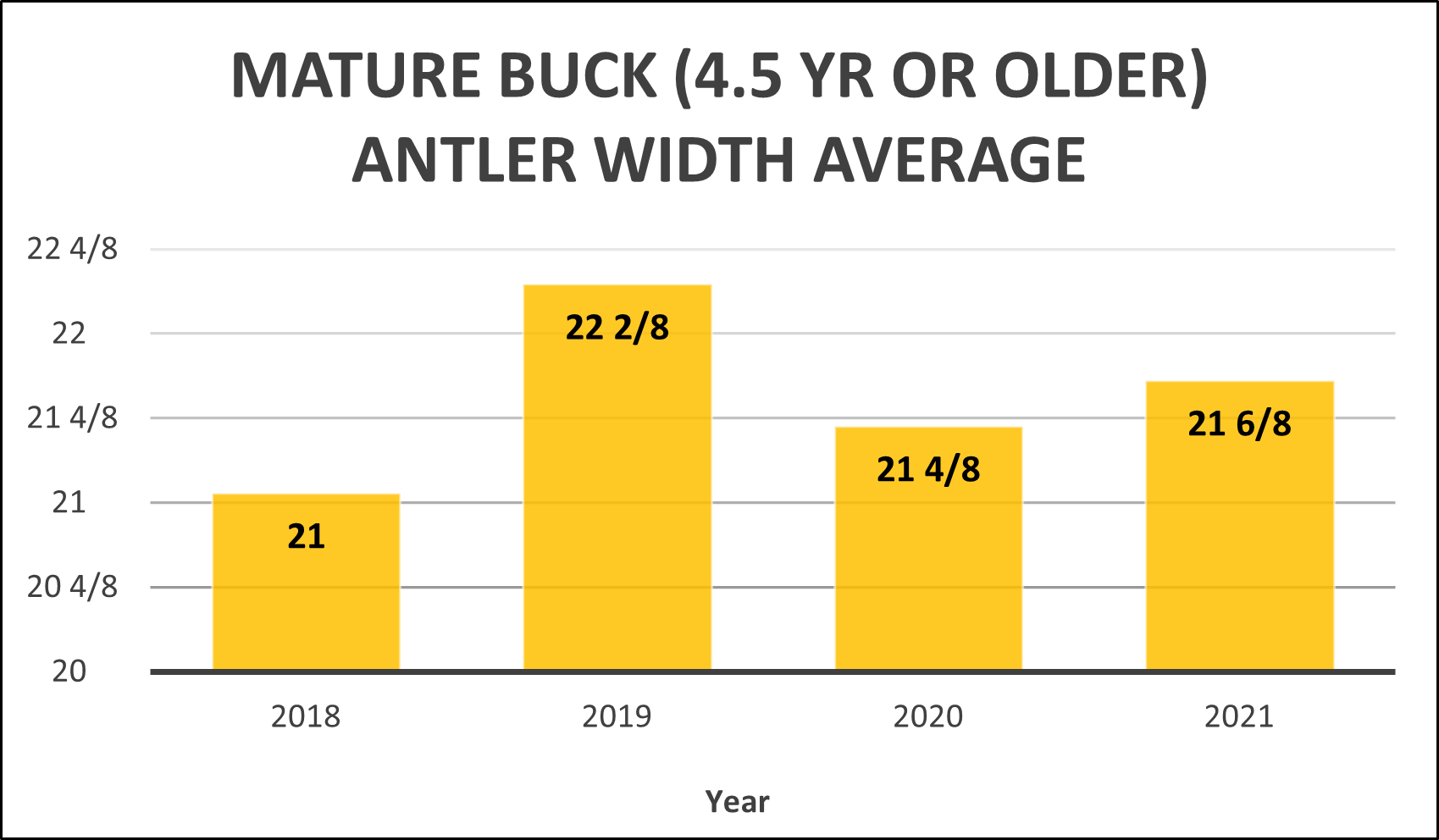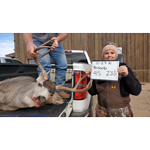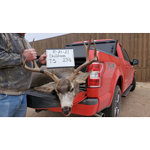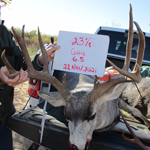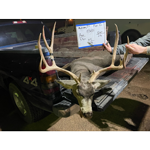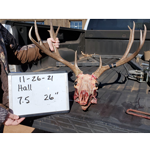Panhandle Mule Deer Antler Restriction Results
Data from 2018 to 2021 indicate clear progress toward the goals of the experiment.
Age of Mule Deer Bucks Harvested
Age data prior to the antler restriction (1994 to 2017; green bars) show that only 33% of the mule deer bucks aged and measured by TPWD biologists were 5.5 years old or older in the southeast Panhandle. During the four years of the experiment, 50% of the bucks brought to the check stations were 5.5 years old or older. The 1% in the 1.5 to 2.5-year-old age class represents bucks that did meet the antler restriction minimum.
Mule Deer Sex Ratio
From winter helicopter surveys conducted from 2005 to 2018 (prior to the experiment), TPWD estimated an average sex ratio of 4.7 does per buck, which is an indicator of intense buck harvest. During the next 4 years of the experimental antler restriction, the average sex ratio was 2.9 does per buck. Substantially more bucks were observed during 2019 to 2022 post-season helicopter surveys and ground counts than in years past. The improvement in sex ratio during 2019 to 2022 is further evidence that the experiment had positive population impacts.
Young Bucks Protected
Harvest data collected during the experiment and antler and age measurements taken as part of ongoing research projects indicated that 100% of 1.5-year-olds, 86% of 2.5-year-olds and 47% of 3.5-year-olds did not meet the 20” antler restriction. In result, about 80% of bucks within these young age classes were protected.
Meeting the Antler Restriction
Eighty one percent of mature bucks (4.5 years old or older) checked during the experiment met the antler restriction with an average of 83%, 80% and 82% of 4.5, 5.5–6.5 and 7.5+ year-olds, respectively, having an outside spread of the main beams of at least 20”. Only 8% (17/212) of all mature bucks had an outside spread of the beams of 18 7/8” or less, which is an indication that the occurrence of mature bucks with “narrow racks” is not common.
Mature Bucks Antler Width
The average outside spread of the main beams of mature bucks (4.5 years old or older) measured and aged by TPWD biologists show an increasing trend since 2018. In the initial year (2018) of the experiment the average antler width of mature bucks was 21”, an inch over the antler restriction minimum, while the following three years’ averages were wider than in 2018. If selective harvest was having a negative impact on antler spread width, then spread averages would be decreasing over time. However, these data and the fact that only 8% of the mature bucks checked during the experiment had an outside spread of 18 7/8” or less help debunk the erroneous belief that the antler restriction will lead to a preponderance of “narrow-rack” bucks.
Obviously, the antler restriction is not flawless, but all data collected during the experiment point to an undeniable improvement in mule deer sex ratios and buck age structure. These results demonstrate that the experiment’s objectives of managing for a more natural mule deer sex ratio and buck age structure were met using an outside spread of the main beams antler restriction set at 20”. In addition, public support for the mule deer antler restriction has been very favorable. Therefore, TPWD proposed and the TPW Commission approved making the antler restriction permanent in the 7 counties where the experiment took place and expanded the rule to some other adjacent counties for the 2022-23 hunting season.
Checked Mule Deer Bucks Gallery
